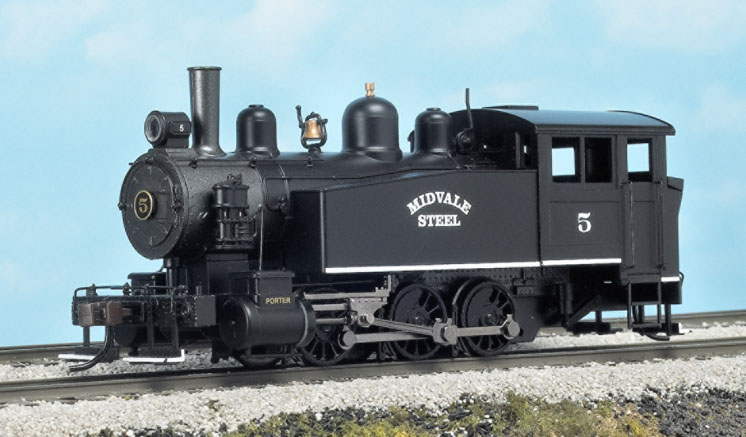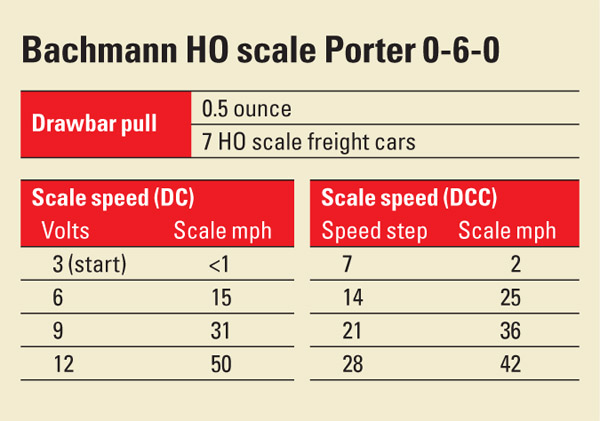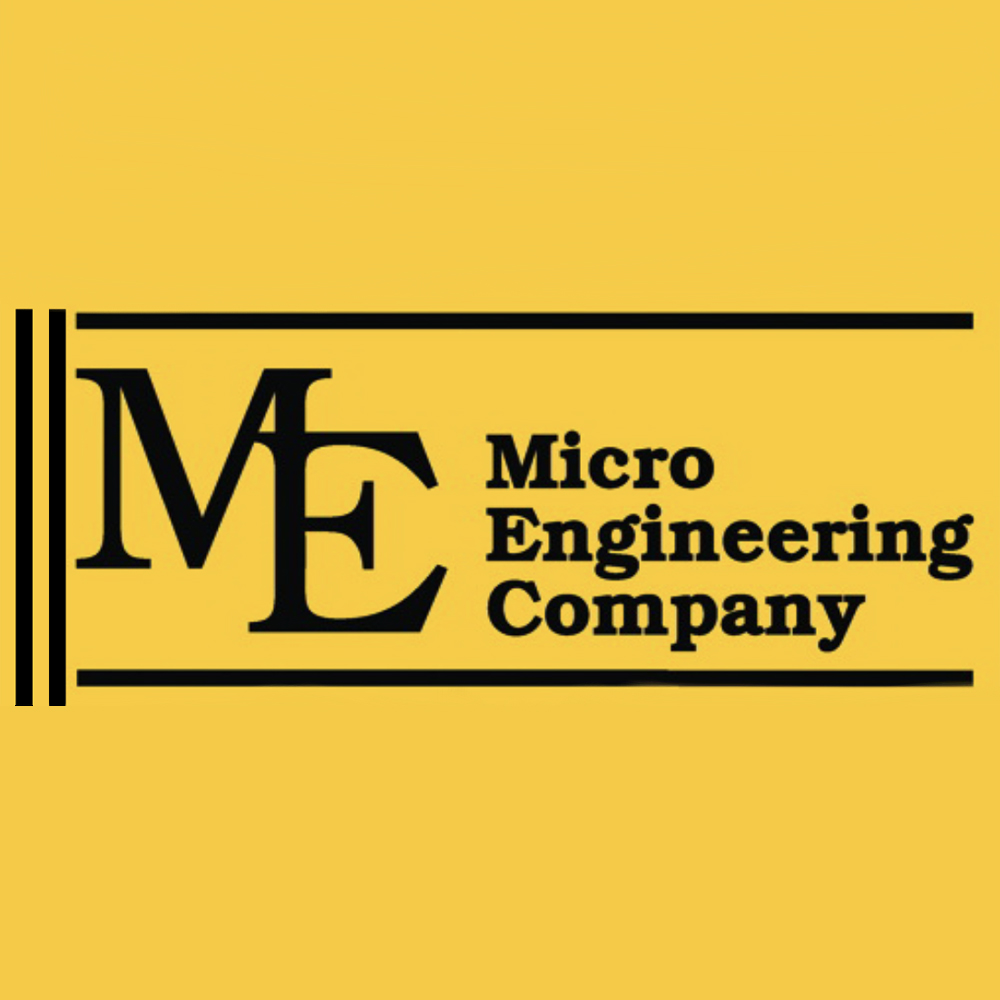The H.K. Porter Co. carved out a niche for itself by building locomotives for logging, mining, and factories. By 1921, Porter had built more than 600 locomotives. Like other industrial locomotive builders, Porter built its engines to order for each individual customer.
The Bachmann model matches a photo of an 0-6-0 side tank locomotive shown in the 1892 Porter catalog. The major dimensions of the model, including its 11-foot wheelbase and 50″ drivers place it as a class C S-K locomotive between 75 and 83 tons.
The model depicts the locomotive with a dynamo-powered electric headlight, which would have been a common addition starting about 1920.
The model features a plastic body shell with well-defined molded detail, including hinges on the smokebox door. Metal detail parts include handrails, uncoupling levers, and the bell.
The cab doesn’t have any window glazing, but the backhead features a molded firebox door and other detail.
I was unable to find a prototype photo of Midvale Steel no. 5. However, all the lettering on the model is neatly printed and opaque.
On our DC test track, the model ran smoothly throughout its speed range without any jerkiness or binding, but there was some motor noise. The 50-scale-mph top speed is fast for a slow-speed industrial engine.
Out of the box, the Porter didn’t start moving on our DCC test track until I advanced the throttle to speed step 7. After I increased the value of configuration variable (CV) 2 to 16, the model moved at 1.5 scale mph in speed step 1. A list of the decoder’s CVs is available on the Bachmann website.
The decoder supports long and short addressing. I programmed acceleration and deceleration momentum using CVs 3 and 4.
The two-function decoder allows the user to turn the headlight on and off, using function 0. The headlight can also be dimmed with function 1. When turned on, the headlight and backup light operate according to the locomotive’s direction on both DC and DCC layouts.
The model’s pulling power is what one would expect from a light-duty industrial switcher.
The Bachmann Porter 0-6-0 would look great shifting cars on the tight spurs of a trackside industry.
Manufacturer
Bachmann Trains
1400 E. Erie Ave.
Philadelphia, PA 19124
www.bachmanntrains.com
Era: 1920s to 1950s (as detailed)
Road names: Midvale Steel; Atchison, Topeka & Santa Fe; Bethlehem Steel; Midwest Quarry & Mining Co.; Pennsylvania RR
Features
- All-wheel drive and electrical pickup
- Can motor
- Dual-mode DCC decoder
- Front and rear E-Z Mate Mark II operating knuckle couplers at correct height
- Light-emitting diode headlight and backup light
- Metal wheels, in gauge
- Weight: 4.7 ounces














